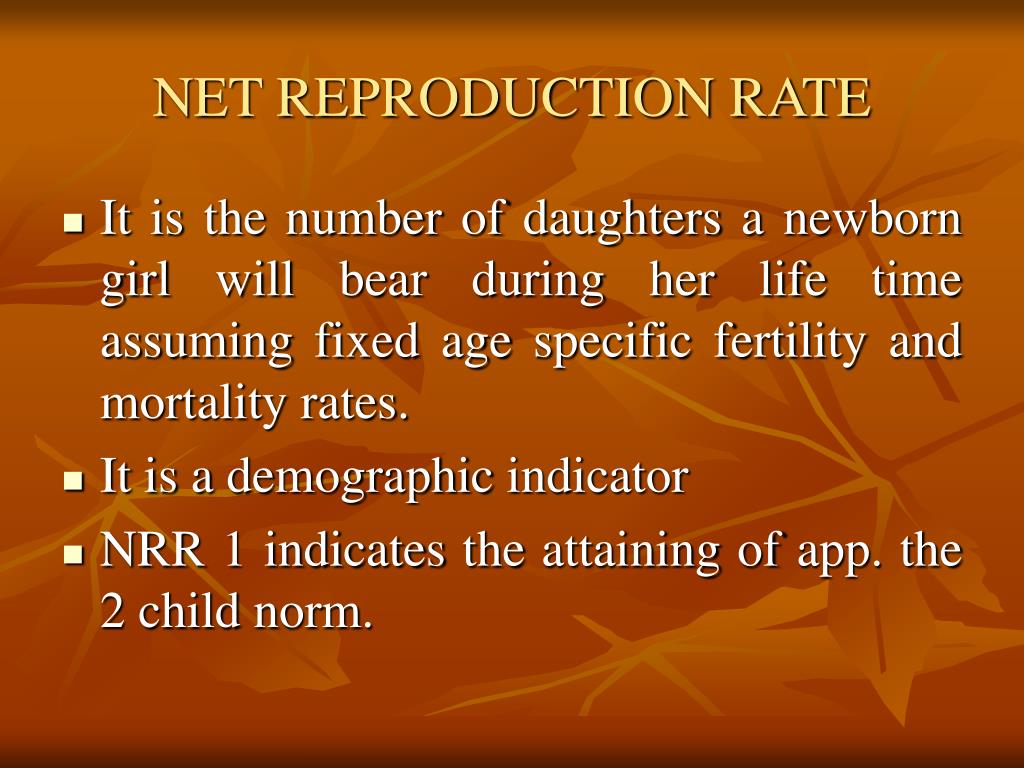
PPT Dependency Ratio PowerPoint Presentation, free download ID3954836
The net reproductive rate is the lifetime reproductive potential of the average female, adjusted for survival. Assuming survival and fertility schedules remain constant over time, if R 0 > 1, then the population will grow exponentially. If R 0 < 1, the population will shrink exponentially, and if R 0 = 1, the population size will not change.

26 Uv Index Use A Pareto Chart To Display The Data The Data Represent
The net reproduction rate, denoted by R 0, is one of most important indices in mathematical demography. Under the regime of classical (single-state or uni-regional) stable population theory, R 0 is calculated as $$ { {\mathrm { R}}_0}=\int_ {15}^ {49 } {\beta (a)/ (a)\rm da} $$
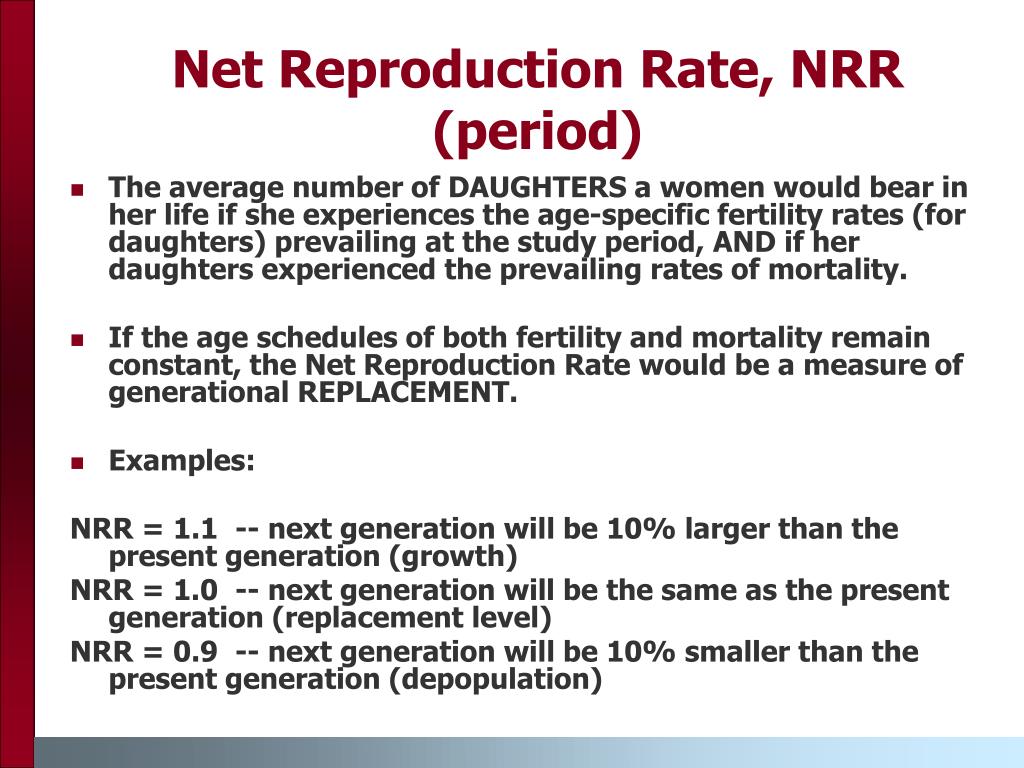
PPT Demography of Russia and the Former Soviet Union PowerPoint
Definition The average number of daughters a hypothetical cohort of women would have at the end of their reproductive period if they were subject during their whole lives to the fertility rates and the mortality rates of a given period. It is expressed as number of daughters per woman. Description

Net reproduction rate (R 0 , a), intrinsic rate of increase (r m , b
For just patch 1 in isolation, the net reproductive rate is 1.65, the cohort generation time is 4.87, and growth rate is 0.104; for patch 2 in isolation these numbers are 1.67, 7.62, and 0.068. For the 2-patch population with dispersal, we find that R 0 = 1.66, T c = 6.35, and r = 0.089, which are all reasonable intermediate values.
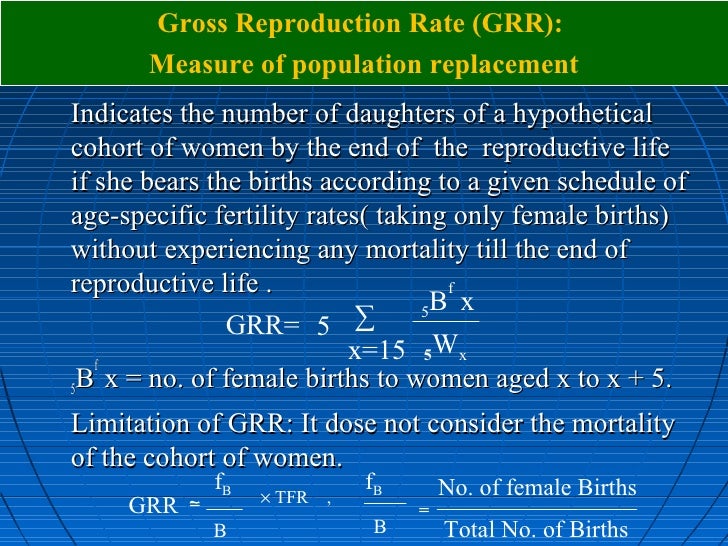
Measures of fertility
In population ecology and demography, the net reproduction rate, R0, is the average number of offspring (often specifically daughters) that would be born to a female if she passed through her lifetime conforming to the age-specific fertility and mortality rates of a given year.

Net reproduction rate, Republic of Bashkortostan, 20022019 Download
Net reproduction rate Gross reproduction rate Total fertility rate 1990 1995 2000 2005 2010 2014. NOTES: Total fertility rate is the sum of birth rates for 5-year age groups multiplied by five. Gross reproduction rate is the sum of birth rates by 5-year age groups multiplied by five and by the proportion of births that were female.
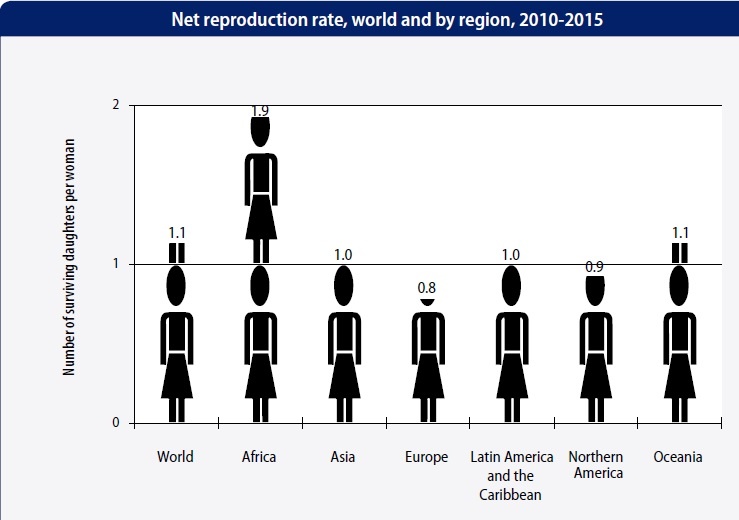
POPULATION PROBLEM Dr Rajiv Desai
The net reproductive rate is a measure of the average number of offspring produced per individual in a population over their lifetime. The formula used to calculate the Net Reproductive Rate is as follows: Net Reproductive Rate (NRR) = ( (Number of Births - Number of Deaths) / Population Size) * 100

PPT Fertility Ideas PowerPoint Presentation, free download ID6351831
An alternative fertility measure is the net reproduction rate (NRR), which measures the number of daughters a female would have in their lifetime if they were subject to prevailing age-specific fertility and mortality rates in the given year. When the NRR is exactly 1, then each generation of females is exactly reproducing themselves.

Family size Total Fertility Rate ( TFR ) Net Reproductive Rate
The net reproduction rate (NRR) is an alternative fertility measure to the more common total fertility rate (TFR) and accounts for the mortality context of the population studied.
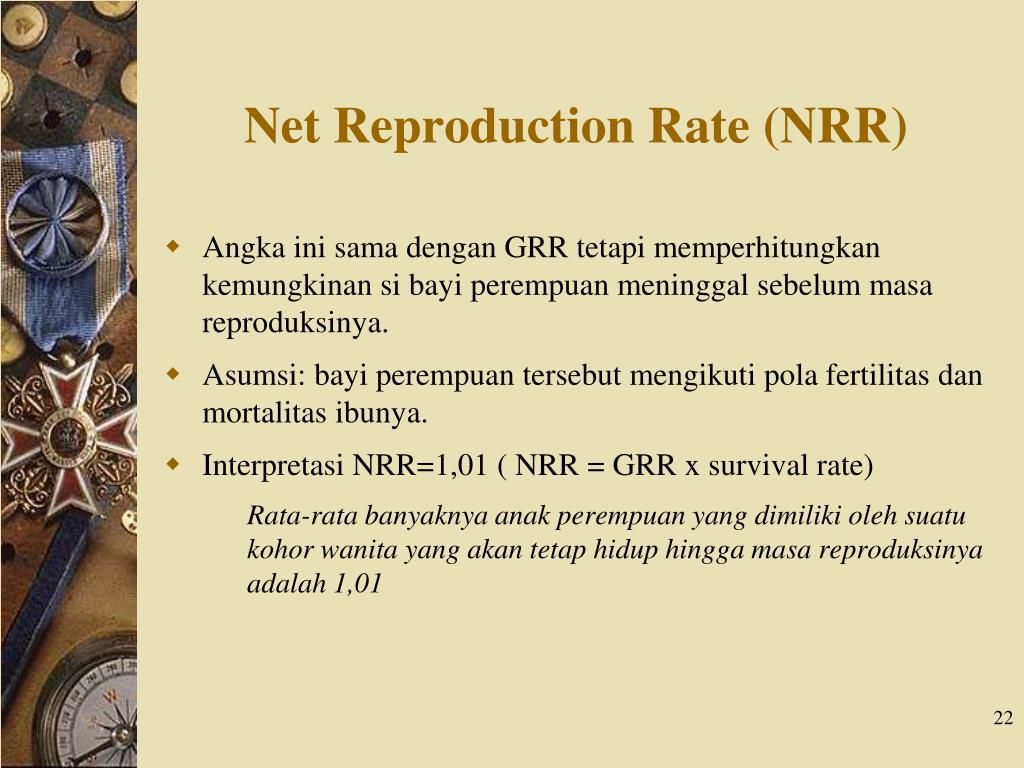
PPT FERTILITAS PowerPoint Presentation, free download ID5362256
statistics Learn about this topic in these articles: life tables In population ecology: Calculating population growth.her lifetime is called the net reproductive rate ( R0 ).

PPT DASARDASAR KEPENDUDUKAN/DEMOGRAFI Fertilitas PowerPoint
A net reproductive rate of 1.0 indicates that a population is neither increasing nor decreasing but replacing its numbers exactly. This rate indicates population stability. Any number below 1.0 indicates a decrease in population, while any number above indicates an increase.

Measures of fertility
In this video, we will learn about reproduction rates. Following are the topics covered in the video:1. Gross reproduction rate2. Net reproduction rate (with.

Calculation of Gross Reproductive Rate Net Reproductive Rate YouTube
Table 3 presents selected derived measures of natality for as many years as possible between 1980 and 1999. These measures are the child-woman ratio, the total fertility rate and the gross and net reproduction rates. Description of variables: The child-woman ratio is the number of children under five-years of age per 1 000 women aged 15-49 at a.

Net reproduction rate, intrinsic rate of increase, generation time and
The net reproduction rate, denoted by R0, is one of most important indices in. mathematical demography. The quantity is defined as the expected number of. female newborns produced by a woman during her entire life. Under the regime of classical (single-state or uni-regional) stable population theory, R0 is calculated.

Gross Reproduction Rate 🆚 Net Reproduction Rate(JKSSB Acct. Asst
Net reproduction rate. The reproduction of the population refers to a change of a generation into a new one. Reproduction is measured by gross reproduction rates or net reproduction rates that generally indicate the ratio between the sizes of the daughter's and mother's generations. The fertility and mortality of the mother's generation before.

PPT Fertility Rate PowerPoint Presentation, free download ID6649160
The net reproduction rate (R 0) is the number of surviving daughters per woman and an important indicator of the population's reproductive rate. If R 0 is one, the population replaces itself and would stay without any migration and emigration at a stable level.